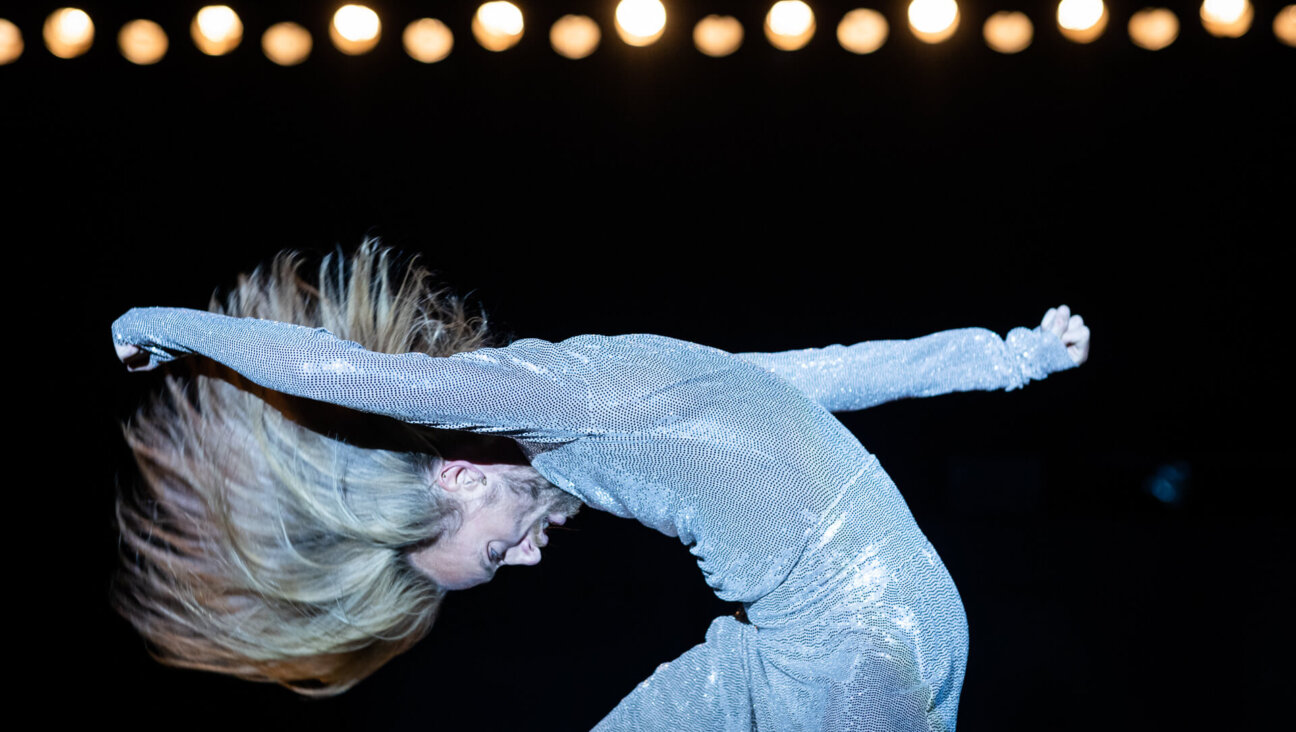Finding a Niche, Mameloshn Goes Mainstream
So “oy” and “bubkes” are now in Merriam-Webster’s dictionary, as the Forward reported last month. Should we kvell or should we kvetch? And what do the terms’ entries into the American lexicon tell us about Jews in America? Probably not what you think.
To begin with, these words and the 100 or so others like them that are already in English dictionaries — unfortunately and inappropriately labeled by some as “shtetl slang” — are in one way or another not really Yiddish, but rather special products of American Jewish culture. You don’t have to look any further than to words like nebbish, schmo, schnook and schlock, not to mention boychik and nogoodnik, to realize that this is the emes.
Even words whose yichus is more clearly Yiddish usually have meanings or forms in the English of American Jews that are not the same as what similar-sounding words had in the shtetl. In Kasrilevke a unit of blintzes was a blintze, but in American, as you know, it’s a blintz. Over there, a klutz was a log, a shtick was a piece of something we need not reprint in this family newspaper, a nudnik was just a boring person (not an annoying one) and schmaltz could only make you cry if you were cutting up onions to mix with it into chopped liver.
We probably don’t have to tell you what these words mean in American Jewish English. If you grew up in an American Jewish milieu, you know what they mean, though you might not have known what the words mean in Yiddish because you probably don’t speak Yiddish. And if you happen not to know what they mean, well, you can look them up in Merriam-Webster’s or, indeed, the American Heritage dictionary.
Bubkes is another example. In the Old World this word referred to the beanlike excremental product of goats. But use it in this sense in English and your listener won’t understand bubkes. The tendency for a shmutsy Yiddish word to take on a relatively sanitized meaning in American Jewish usage is widespread. In Yiddish, they were strong words. In English, they’re cute.
You could argue, along with a number of mavens, that this linguistic transfer represents a cultural assimilation of American Jews into the mainstream. We’re not just hocking a tchaynik — after all, so many mavens can’t be wrong. But at the same time, when these Jewish American expressions enter the mainstream, as some do, what is really happening is that general American culture is assimilating to American Jewish culture — something from which we should shep nakhes.
In fact, many of these English words of Yiddish origin often help set American Jews apart. If you go through a list of the particularly Jewish words in an English dictionary, you may notice how many of them are distinctly haimish — much more than their Yiddish originals.
While klots, kvetsh, shtik and shmues are everyday Yiddish words, the English words klutz, kvetch, shtick and schmooze have tam. Maybe this is where the idea that Yiddish is inherently funny comes from — the fact that most English words that come from Yiddish are funny.
It’s hard to think of an English word of Yiddish origin that isn’t zaftig, that is to say, a word that is normal enough to be kosher for use in a term paper or a State of the Union address. The only exceptions are words for food, like bagel and pastrami, and religious terms like shul and bris — both kinds of technical jargon. There is just one glitch in this generalization, though we believe it is the exception that proves the rule: Glitch is an ordinary word of English that has somehow lost its Jewish flavor.
So English words derived from or inspired by Yiddish remain a distinct and distinctive group. Many of them are used overwhelmingly by American Jews, and when non-Jews use them it can be funny — sometimes intentionally, sometimes not. It is hard to imagine, say, President Bush saying “oy” without responding “Oy!”
The constantly emerging American Jewish vocabulary, then, is like American Jews in general. Instead of being absorbed into American culture, American culture absorbs our culture, a culture that, like these words themselves, draws on the past but reshapes it into something new, while remaining unique and different. And like American Jewish culture, American Jewish language is dynamic: Only a shmendrik would call a police officer a “shamus” nowadays.
While Yiddish culture was once the principal source of American Jewishness and American Jewish idioms, in the years to come modern Hebrew — which Americans may soon come to call Ivrit — is likely to exert an increasing influence on the English of American Jews, as will the specialized vocabulary used in yeshivas. It is impossible to tell what American Jewish English will look like in the future, but we can be sure, kinahora, that, like American Jews themselves, it will continue to be dynamic, diverse and distinct.
Benjamin Sadock is a graduate student in the Yiddish studies program at Columbia University. Jerrold Sadock is Glen A. Lloyd professor of linguistics and chairman of the linguistics department at the University of Chicago.
The Forward is free to read, but it isn’t free to produce

I hope you appreciated this article. Before you go, I’d like to ask you to please support the Forward.
Now more than ever, American Jews need independent news they can trust, with reporting driven by truth, not ideology. We serve you, not any ideological agenda.
At a time when other newsrooms are closing or cutting back, the Forward has removed its paywall and invested additional resources to report on the ground from Israel and around the U.S. on the impact of the war, rising antisemitism and polarized discourse.
This is a great time to support independent Jewish journalism you rely on. Make a Passover gift today!
— Rachel Fishman Feddersen, Publisher and CEO
Most Popular
- 1

News Student protesters being deported are not ‘martyrs and heroes,’ says former antisemitism envoy
- 2

News Who is Alan Garber, the Jewish Harvard president who stood up to Trump over antisemitism?
- 3

Fast Forward Suspected arsonist intended to beat Gov. Josh Shapiro with a sledgehammer, investigators say
- 4

Opinion What Jewish university presidents say: Trump is exploiting campus antisemitism, not fighting it
In Case You Missed It
-
Fast Forward Jewish students, alumni decry ‘weaponization of antisemitism’ across country
-

Opinion I first met Netanyahu in 1988. Here’s how he became the most destructive leader in Israel’s history
-

Opinion Why can Harvard stand up to Trump? Because it didn’t give in to pro-Palestinian student protests
-

Culture How an Israeli dance company shaped a Catholic school boy’s life
-
Shop the Forward Store
100% of profits support our journalism
Republish This Story
Please read before republishing
We’re happy to make this story available to republish for free, unless it originated with JTA, Haaretz or another publication (as indicated on the article) and as long as you follow our guidelines.
You must comply with the following:
- Credit the Forward
- Retain our pixel
- Preserve our canonical link in Google search
- Add a noindex tag in Google search
See our full guidelines for more information, and this guide for detail about canonical URLs.
To republish, copy the HTML by clicking on the yellow button to the right; it includes our tracking pixel, all paragraph styles and hyperlinks, the author byline and credit to the Forward. It does not include images; to avoid copyright violations, you must add them manually, following our guidelines. Please email us at [email protected], subject line “republish,” with any questions or to let us know what stories you’re picking up.











